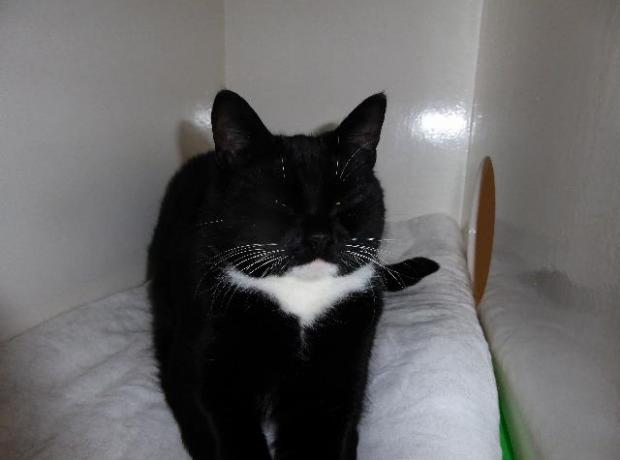Links to vets in Guernsey
Local useful links
Website donated by:

Cats are hugely popular in Guernsey with around 10,000 sharing our homes and Island.
Every cat owner, at least once and often in the middle of the night has stepped into a pile of something that looks and feels like anything but hair and wondered, "Does my cat do this on purpose?!" The answer is no they don't and in fact, hairballs are the number one health condition reported by 35% of cat-owning households.
Is your household one of them? If so, there is help with a variety of diets on the market that can help.
What are Hairballs?
The formation of hairballs is a common feline condition that is brought on by self-grooming and the associated ingestion of hair. The ingested hair can accumulate in your cat's throat or stomach, causing irritation.
Cats with hairballs are often seen gagging, regurgitating or vomiting hair and mucus. All breeds of cat are susceptible to hairballs, so all cat owners should know that controlling this issue is as easy as feeding their cat a Hairball Control cat food.
Helen Sharman Animal Care Assistant said "I work in the cattery at the GSPCA and we often have to clean up hairballs from our rescue cats."
"With 40 to 70 cats at the GSPCA at anyone time we have to monitor the health of lots of feline friends."
"We have some lovely cats in for homes and if anyone is interested in getting a new cat please do call us on 257261 or pop into the Shelter."
Steve Byrne GSPCA Manager said "Around 50-80% of cats produce hairballs as frequently as once a month."
"Hairballs although not very nice are often a natural fact of cat life, but in can sometime be a much more serious issue that may well need vet attention."
"With health concerns please do get in touch with your vet."
Things You Probably Didn't Know About Hairballs:
1. The average cat spends 1/3 of their waking life grooming themselves. Most cats sleep an average of 13-14 hours per day and groom themselves for 3-4 hours per day. That only leaves 7 hours per day to play, demand food, stare at you in a condescending manner, and vomit hairballs on to your carpet or rug.
2. Hairballs can cause a lack of appetite, dehydration, and depression in your cat. This is why it’s so important to offer them a food that is high-quality pet food and brush them daily (especially long-haired cats and during shedding seasons) to eliminate excess pet hair. Excessive grooming in a cat could indicate a health issue, just as a lack of grooming could indicate the same.
3. The average cat consumes 173 grams of cat hair each year, that’s about 6 ounces.
4. The largest hairball ever removed from a cat was 5 inches wide (12.5 cm) and weighed in at a whopping 7.5 ounces. The surgery was performed by Cromwell Vet Group in Cambridgeshire, England on a cat named Gemma.
5. The scientific term for hairballs is “trichobezoars.” The word Trichobezoars comes from the Persian word, Bezoar, and means “protection from poison.”
6. A Phytobezoar is a mass of undigested food particles usually from fruits and vegetables such as celery, citrus fruits, coconut, pumpkins, grape skins, prunes, raisins, and most notably persimmons (bezoars resulting from persimmons are called diospyrobezoars)
7. Hairballs were once used to prevent poisoning and act as an antidote if poisoning had already occurred.
8. All animals get hairballs – those particularly susceptible to this problem include cats, ferrets, rabbits, cattle, deer and believe it or not, humans.
9. In 2003, an 18-year-old woman from Canada had a 5.1 lb or 2.3kg hairball surgically removed from her lower intestine. The World’s largest hairball is a collection from Henry Coffer of Charleston, MO. The hairball weighs 167 pounds and is a result of collecting hair clippings throughout his 50-year career as a barber.
To donate towards the many animals in our care, you can do so by:
Calling: 01481 257261
By post or popping in the Shelter: GSPCA, Rue des Truchots, St Andrews, Guernsey, GY6 8UD
Our Just Giving Page by clicking here.
Or why not become an Angel Pen Pal Sponsor and give each month to help animals in our care by clicking here.
If you could help towards or new multi purpose building please click here to find out about the Build Partner programme.
Or our Paypal page by clicking the link below
If you would like to know more please contact the GSPCA on 01481 257261 or email [email protected]
To find out about our Build Partner programme please click here
To find out how to volutneer for the GSPCA please click here
To find out about the Superhero Day Bingo at the Market Bistro please click here
To find out about guided tours at the GSPCA please click here
Have you got a GSPCA Hoody, Polo Shirt, Sweat Shirt or T-shirt? If not get yours by clicking here.
To find out about our Events, how to become a Member, Sponsor an Animal Pen, our Wish List, Corporate Sponsorship & Volunteering, , our New Build & Redevelopment Appeal and much more please click here.
There are many ways to support the work of the GSPCA and you can even donate online by clicking the paypal link below.

By post cheques payable to 'GSPCA' - GSPCA, Rue des Truchots, St Andrews, Guernsey, GY6 8UD
Or by phone 01481 257261.
To find out more regarding our Angel Sponsorship Scheme please click here.
Have you liked us on facebook yet or joined us on twitter?
Here is the latest from the GSPCA Twitter feed -
To see a page full of items on our GSPCA Wish List please click here.



Post new comment
More information about formatting options